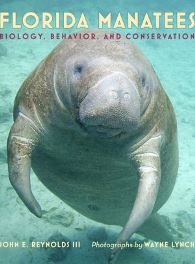Florida Manatees: Biology, Behavior, and Conservation
 John E Reynolds III
John E Reynolds III
Johns Hopkins University Press, £29.50
If the image on the cover does not entice the reader, a look at page 50 surely will: it shows a manatee hugging a human diver. The book focuses on the beauty, grace and vulnerability of these herbivores, but it also covers other sea mammals and their habitats.
Nine referenced chapters and an index produce a critical examination of the status of the Florida manatee. Chapter one describes the all-too-familiar human exploitation issue, from local extinction of the animals around Guadeloupe to a brave reintroduction scheme in which the author has been involved.
Adaptations and evolution of the Sirenia order are the basis of chapters two and three, while chapter four covers myths, legends and hunting history. The chapter on behaviour and ecology has some of the most iconic images of the Florida manatee, and includes information on the vegetation types of their diet. Sea grasses are vital to manatee, with feeding behaviour going hand in hand with marine-estuarine vegetation productivity. Because of their grazing habit, such vegetation flourishes and consequently supports other herbivores as well as commercial fishing grounds. Florida manatee survival, and abundance, is therefore crucial to the ecosystem as a whole.
Manatee reproduction and life history (they can live to around 59 years of age), protection of their habitat, threats and conservation solutions make up chapters six to nine. One area of concern is that the many power stations dotted around Florida provide a warm-water refuge for manatees. However, when the power stations shut down and the waters cool, hundreds of manatee stay near the former warm outflow, risking hypothermia.
The final pages are an epilogue in which the proposed downgrading of the manatee's endangered status (due to the success of conservation and protection) is examined. In response to this ironic proposal, the author pleads that before downgrading occurs, work needs to be done with communities across the manatee's range in order to maintain these successes. Reynolds seems to suggest that if this is not done, the cycle of exploitation followed by the need for conservation will start again.
Pat Sang MRSB


